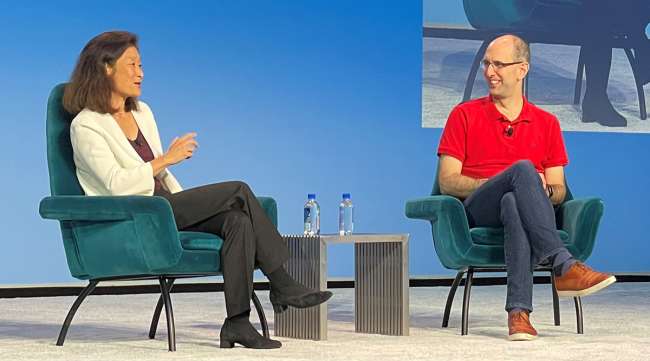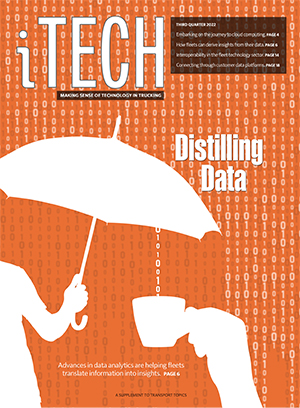Managing Editor, Features and Multimedia
Mapping the Journey to Cloud Computing

[Find the latest in trucking technology: Explore this quarter's issue of iTECH]
For trucking and logistics companies that have invested heavily in their information technology systems over the course of many years, the thought of fully migrating their operations to cloud-based technology can be daunting, to say the least.
Cloud computing — with data and applications stored and accessed remotely over the internet rather than on local systems — is now ubiquitous, with most businesses and consumers using cloud-based services every day, often without even realizing it.
But for companies that have implemented on-premise software systems to run mission-critical business processes, it’s not always so simple to take advantage of the benefits of modern cloud architecture.

Clevenger
Scott Guthrie, who leads Microsoft’s Cloud and AI Group, shared advice on how companies can manage that sometimes-difficult journey to cloud computing during an Aug. 16 session at Trimble Transportation’s technology conference and expo in Orlando, Fla.
In a conversation with Jennifer Lin, Trimble’s chief platform officer, Guthrie described Microsoft’s own transformation over the past decade, including the tech giant’s emergence as a major cloud service provider with its Azure business, which competes with other cloud infrastructure platforms such as Amazon Web Services and the Google Cloud Platform.
“One thing that has helped our success is recognizing the fact that cloud does offer lots of great opportunities, but organizations … have existing investments and have existing systems,” Guthrie said. “If you say, ‘Hey, you can take advantage of this cloud, you just have to rip and replace everything you’ve done over the past 20 years,’ that makes it really hard to take advantage of cloud.”
To support its customers, Microsoft has embraced a “hybrid model” where companies can embark on a more gradual transition that allows them to continue using their existing technology assets while extending them into the cloud, he said.

Q3 iTECH
►Advances in Analytics Help Fleets Translate Information Into Action
►Connected Workflows Can Lead to a Higher Level of Operational Fitness
►Dysart: Personalizing Communications With Customer Data Platforms
►Clevenger: Mapping the Journey to Cloud Computing
Explore the Issue!
He recommended that companies focus first on areas where they are leaving money on the table or are losing business because they lack certain capabilities.
“Look for the business processes that you most want to evolve or transition,” Guthrie said.
As businesses proceed with a cloud migration under a hybrid model, their existing processes that already work great today can be saved for last.
“I think that often leads to the best success, and gives you the confidence that you can put the throttle down as much as you want, or you can ease up if you run into any problems,” he said.
Guthrie also emphasized the value of partnerships among technology companies.
In October, Trimble and Microsoft announced a strategic agreement to co-develop industry-specific cloud platforms — including the Trimble Transportation Cloud — that run on top of Azure.
Looking forward, Guthrie said advances in artificial intelligence, combined with the ability to scale up IT resources through cloud computing, are creating opportunities “to reinvent a whole bunch of different things.”
“We’re starting to see a quantum leap in the intelligence capabilities of those AI models,” he said.
Want more news? Listen to today's daily briefing below or go here for more info:




